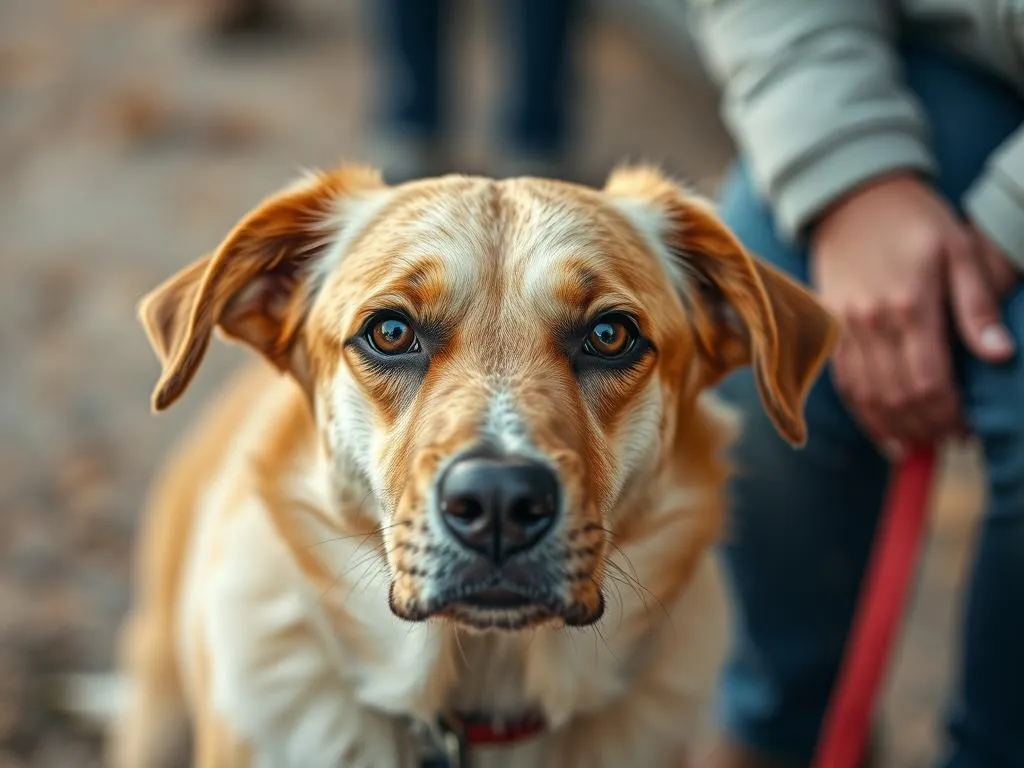
Understanding your dog’s fears can be a challenging yet rewarding experience. For many dog owners, the question of why is my dog afraid of strangers is a pressing concern. Fearful reactions can stem from various sources, and recognizing these can significantly improve your relationship with your furry friend.
Understanding Fear in Dogs
What is Canine Fear?
Fear in dogs is an emotional response to perceived threats or danger. Just like humans, dogs can experience fear as a natural instinct, which serves to protect them from harm. However, not all fear responses are equal. Normal fear might manifest as caution in new situations, while excessive fear can lead to anxiety, phobias, and problematic behaviors.
Common Causes of Fear in Dogs
Several factors can contribute to a dog’s fear, including:
- Genetic Predisposition: Certain breeds may inherently possess a more timid disposition.
- Past Traumas or Negative Experiences: Dogs that have faced abuse or neglect are more likely to develop fears.
- Lack of Socialization During Critical Development Periods: Puppies that miss essential socialization windows may struggle with unfamiliar situations later in life.
Signs of Fear in Dogs
Recognizing the signs of fear in your dog is crucial. Common indicators include:
- Body Language Cues: A tucked tail, pinned ears, and a lowered posture are all signs of a scared dog.
- Vocalizations: Barking or whining can indicate anxiety.
- Behavioral Responses: Fear may cause a dog to hide, flee, or even show aggression when confronted with strangers.
Why Your Dog Might Be Afraid of Strangers
Socialization and Its Importance
Socialization is the process of exposing your dog to a variety of people, environments, and experiences to help them develop confidence. It’s particularly vital during puppyhood, a time when they are most impressionable. A lack of early socialization can lead to a fear of strangers later in life.
Individual Temperament and Personality
Each dog is unique, with different temperaments and personality traits that influence how they react to strangers. Some breeds, such as the Shiba Inu, may naturally be more reserved, while others, like Golden Retrievers, tend to be more social. Understanding your dog’s individual temperament can help frame their behavior towards strangers.
Environmental Factors
The environment plays a significant role in a dog’s behavior. An owner’s demeanor can impact their dog’s perception of strangers; if a dog senses their owner’s anxiety, they may become anxious themselves. Additionally, loud noises or crowded places can overwhelm a dog, increasing their fear.
Past Experiences with Strangers
Negative past experiences can severely impact a dog’s behavior. For example, if a dog was startled or harmed by a stranger, they might associate all unfamiliar people with that trauma. Understanding a dog’s history is crucial in addressing their fears.
Assessing Your Dog’s Fear
Observing Behavior
To help manage your dog’s fear, start by observing their behavior closely. Look for specific triggers that cause anxiety, such as certain types of people or environments. Keeping a fear journal can be beneficial; note when and where your dog shows fear, as this can help identify patterns.
Professional Evaluation
Sometimes, it’s essential to seek help. If your dog’s fear seems severe or unmanageable, consider consulting a veterinarian or a professional dog trainer. They can conduct a behavior assessment and provide tailored strategies for your dog’s specific needs.
Strategies to Help Your Dog Overcome Fear
Gradual Desensitization
Gradual desensitization is a process where you slowly expose your dog to the source of their fear in a controlled manner. Start with a distant view of a stranger, rewarding calm behavior, and gradually decrease the distance over time. This step-by-step exposure helps your dog learn that strangers are not threats.
Counter-Conditioning Techniques
Counter-conditioning involves changing your dog’s emotional response to strangers. For instance, you can associate the presence of strangers with positive experiences, such as treats or playtime. When a stranger approaches, offer your dog a favorite toy or treat to create a positive association.
Positive Reinforcement Training
Utilizing positive reinforcement is crucial in modifying behavior. Reward your dog with treats, praise, or play when they remain calm around strangers. This approach encourages your dog to repeat the desired behavior, reinforcing their confidence.
Creating a Safe Space
Providing a safe space is vital for anxious dogs. Designate a comfortable area in your home where your dog can retreat when feeling overwhelmed. This space should include their favorite toys, a bed, and items that provide comfort, like a blanket or your clothing.
Seeking Professional Help
If the strategies above do not yield improvements, consider hiring a dog trainer or behaviorist. They can provide specialized programs tailored to your dog’s needs, focusing on fear-based behaviors.
Long-term Management of Fear
Regular Socialization Opportunities
Socialization should be an ongoing process. Continue to expose your dog to new people and environments in a controlled manner. Engage in activities such as dog training classes, park visits, or organized playgroups to help your dog practice social skills safely.
Monitoring Progress
Keep track of your dog’s progress as they confront their fears. Record improvements, setbacks, and any new triggers that arise. Adjusting your strategies based on these observations can help you stay proactive in your dog’s training.
Maintaining a Calm Environment
Creating a calm atmosphere at home is essential for managing fear. Reduce stressors such as loud noises or chaotic environments. Techniques like playing soothing music or using aromatherapy can help create a tranquil space for your dog.
Conclusion
Understanding why is my dog afraid of strangers is the first step toward helping them overcome their fears. Recognizing the underlying causes, observing their behavior, and implementing effective strategies are crucial in fostering a trusting relationship between your dog and unfamiliar people. Patience and consistency are key; with time and effort, your dog can learn to feel more secure and confident in the presence of strangers.









